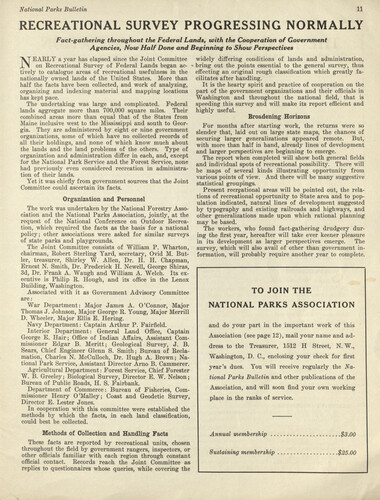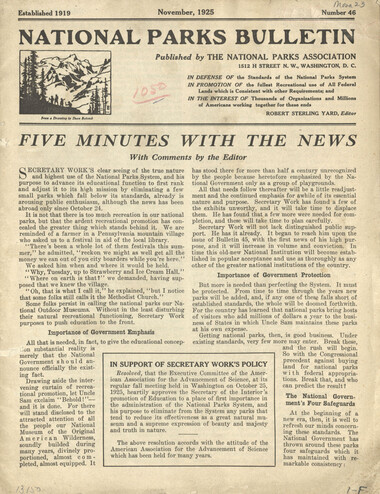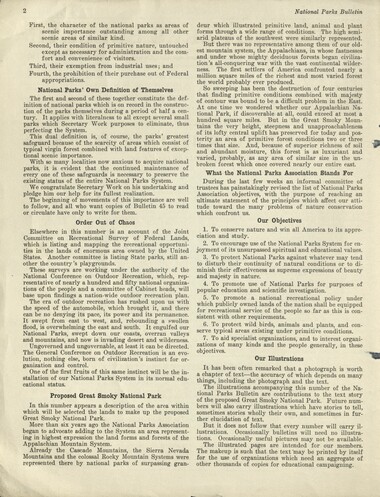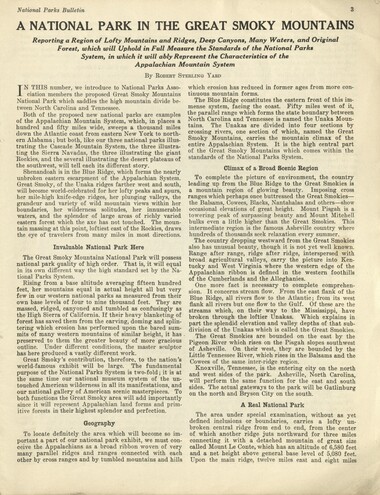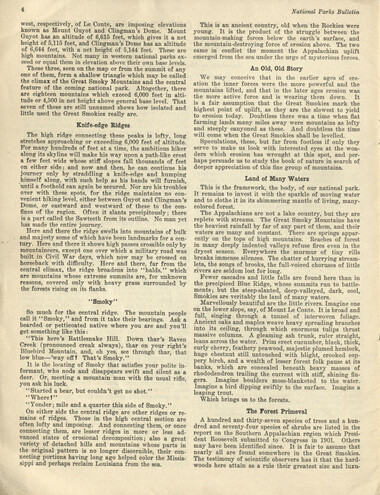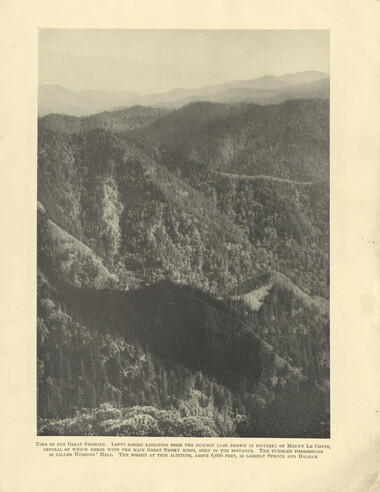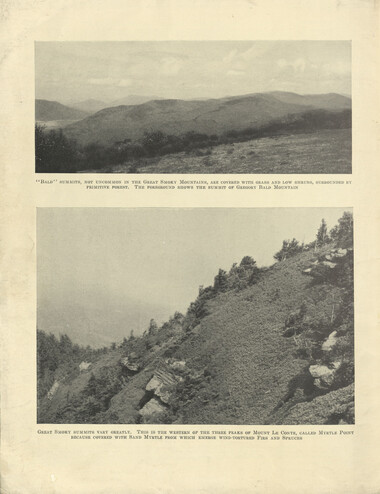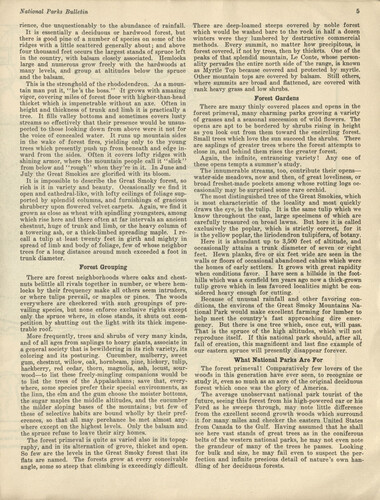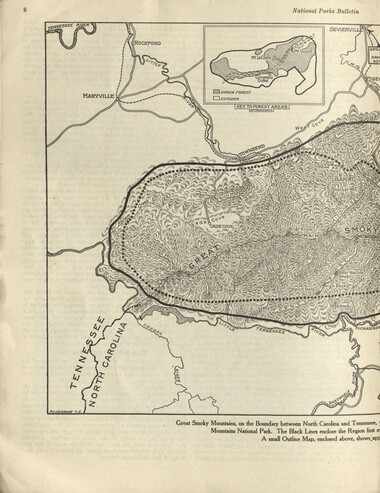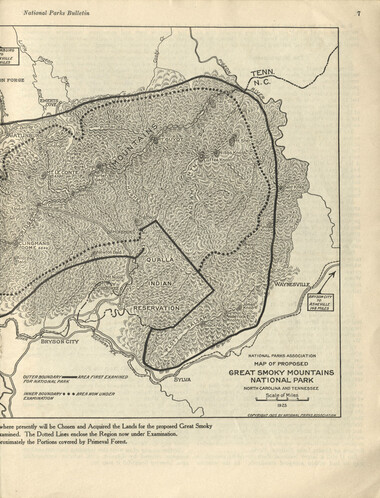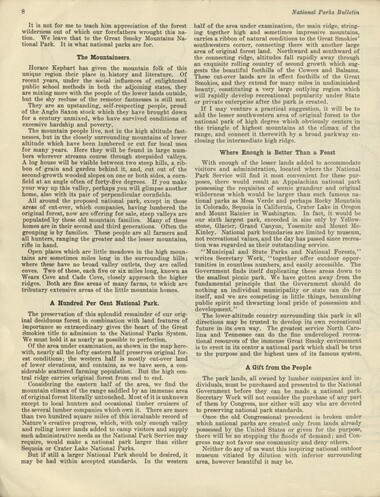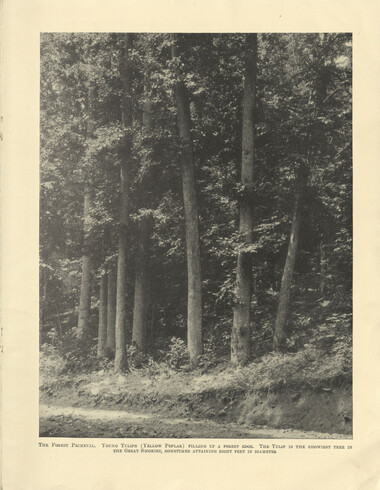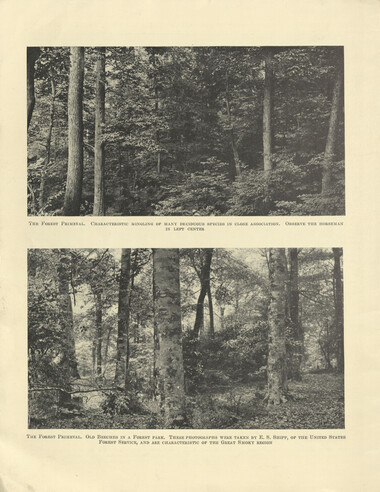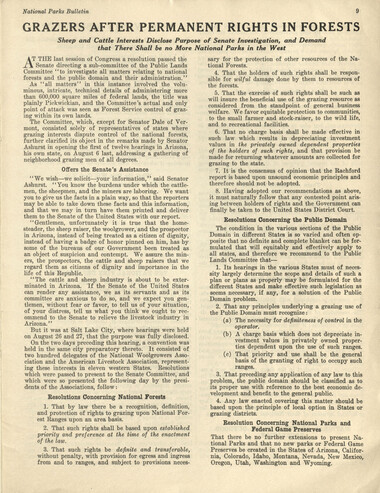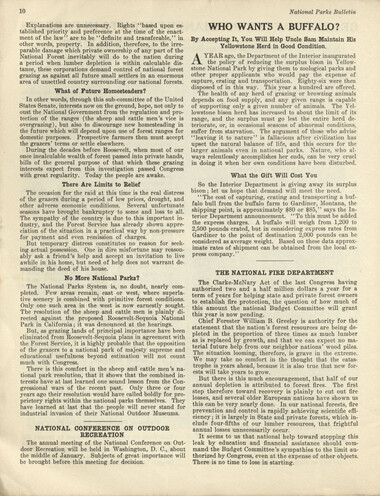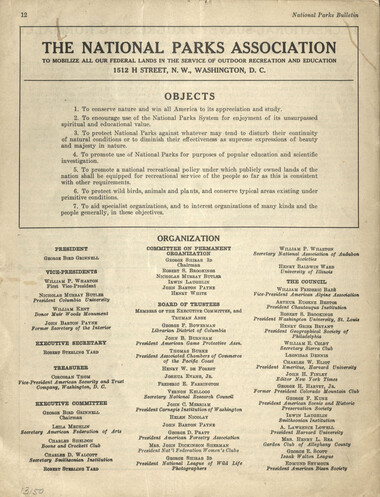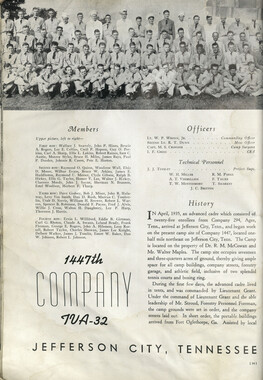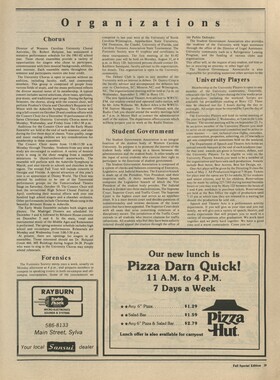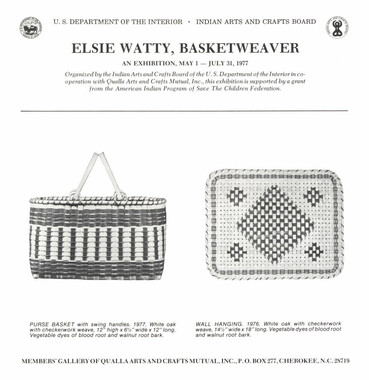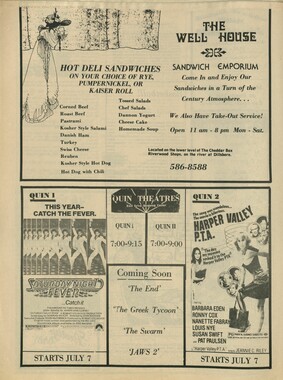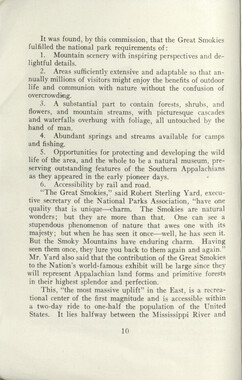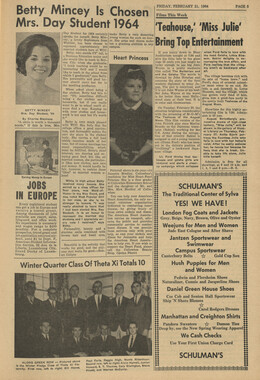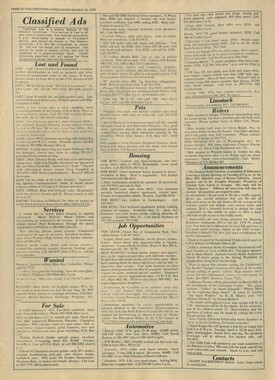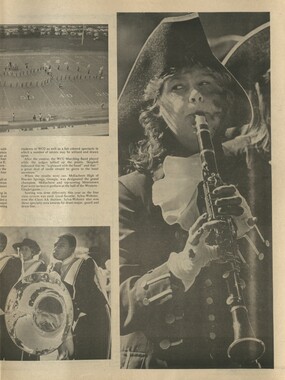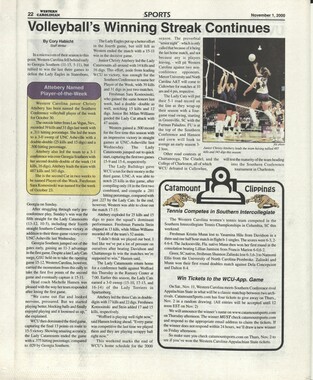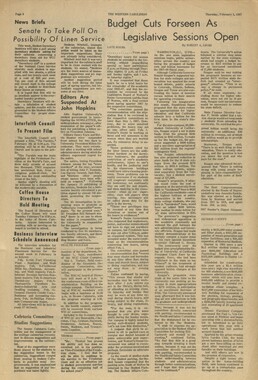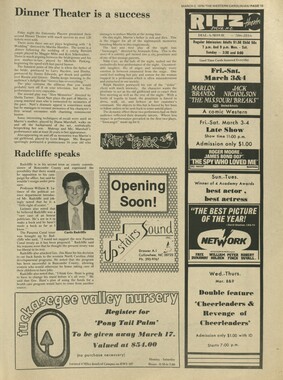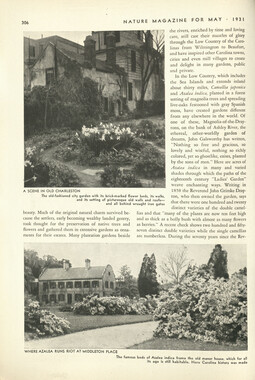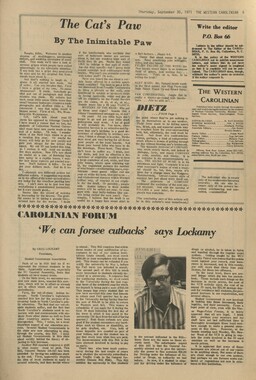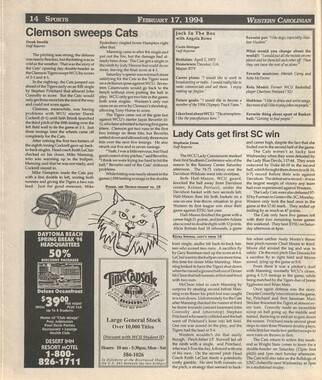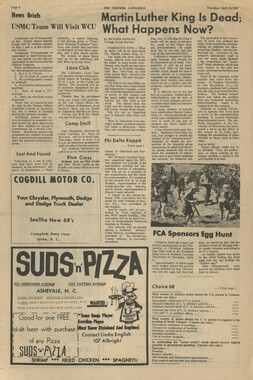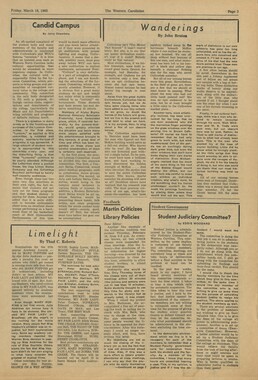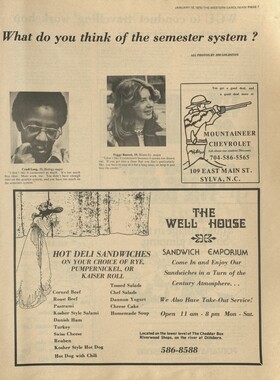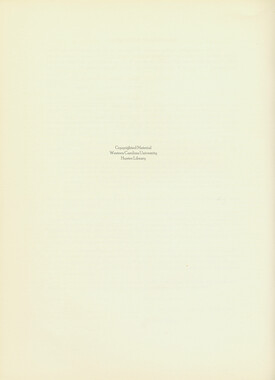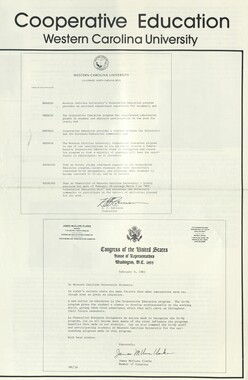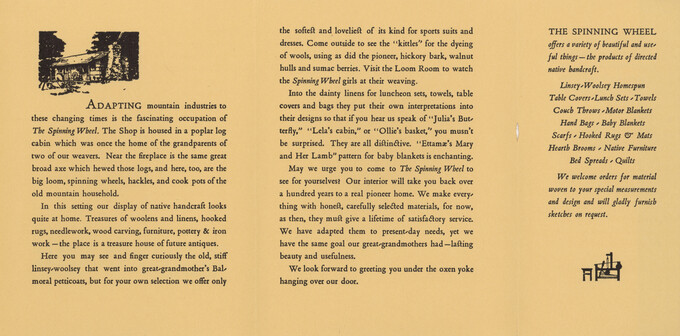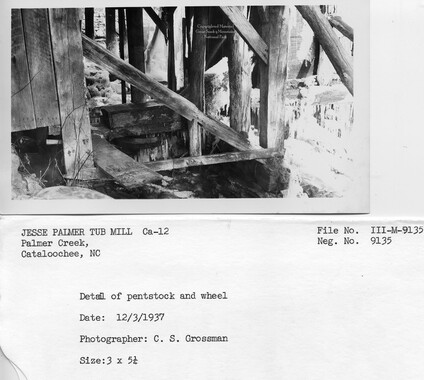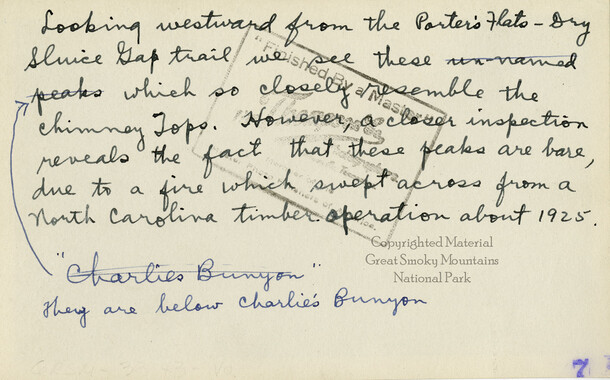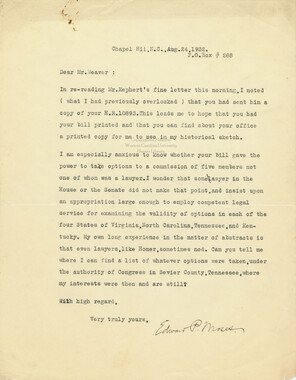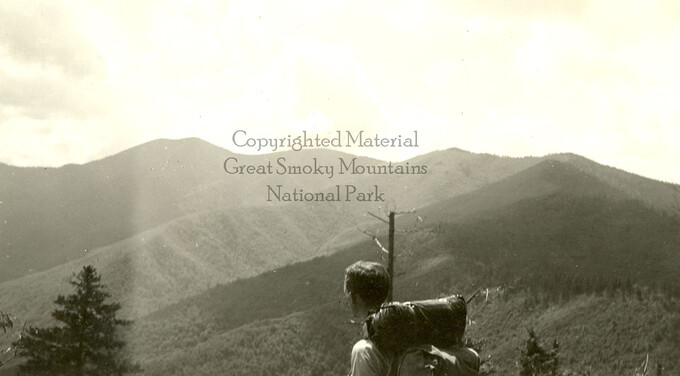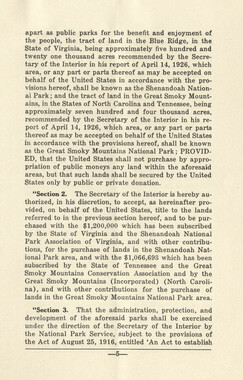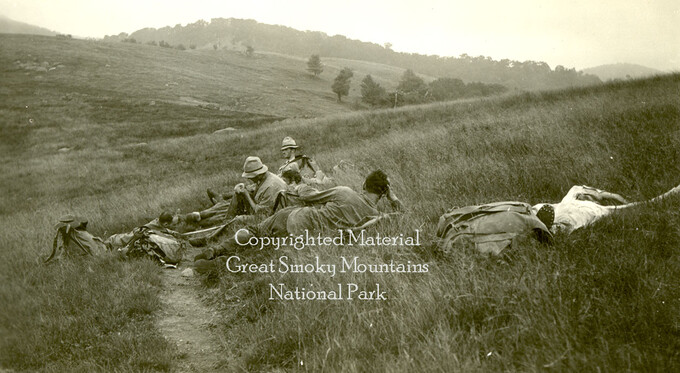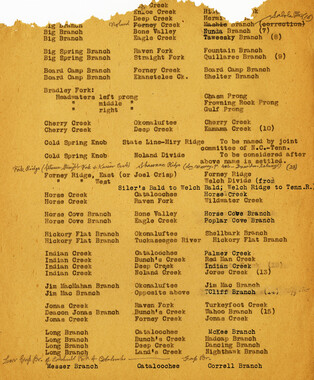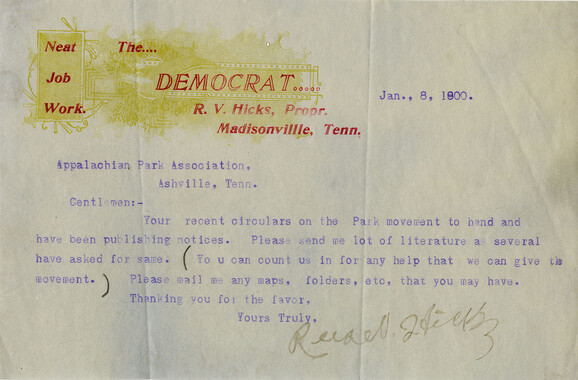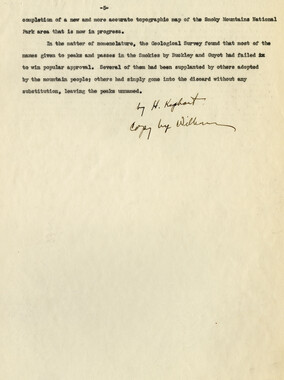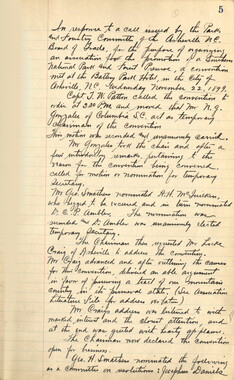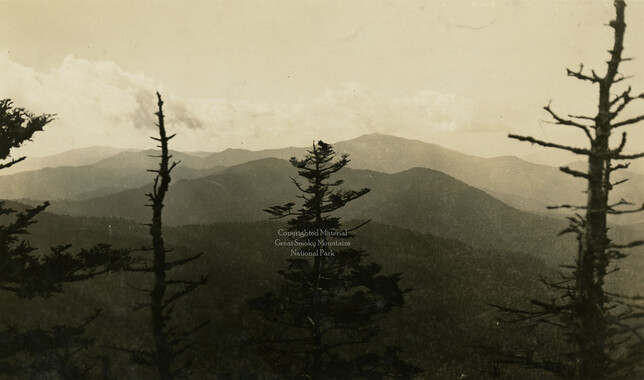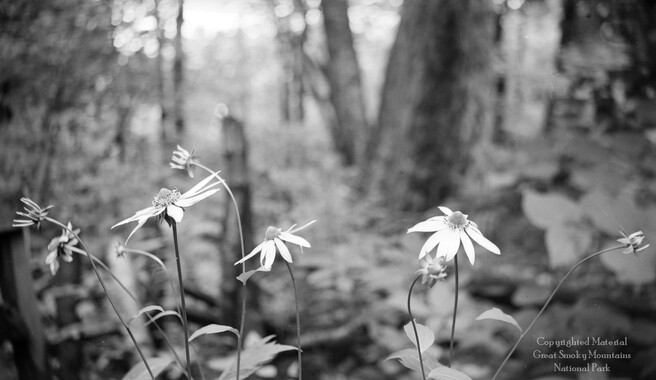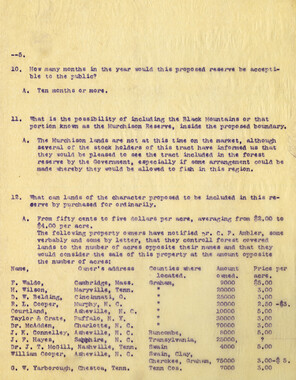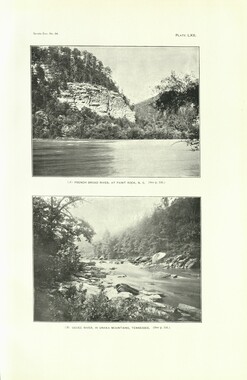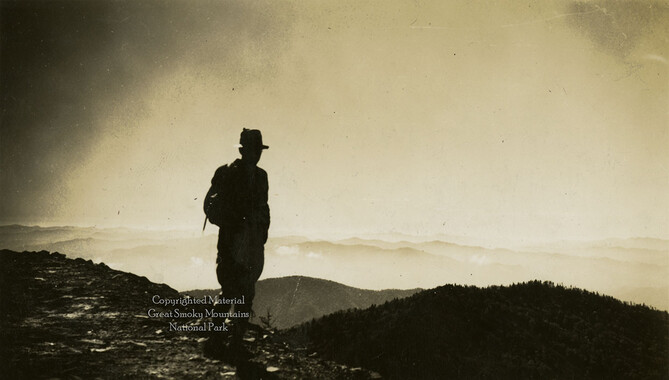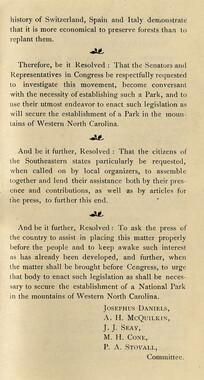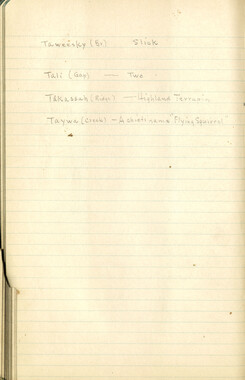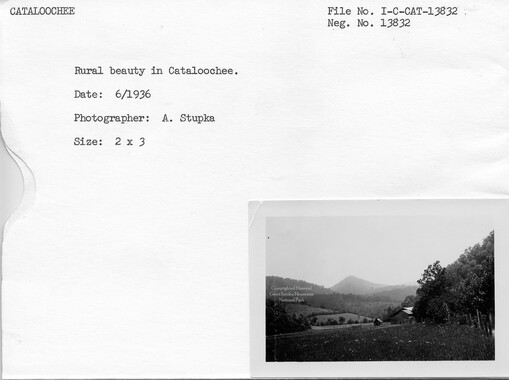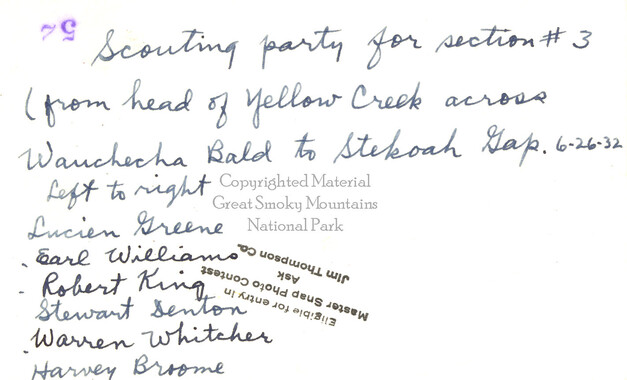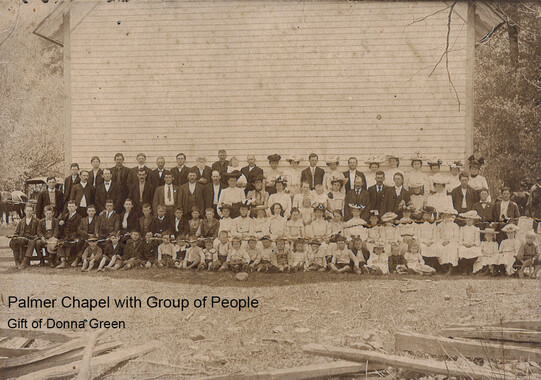Western Carolina University (20)
View all
- Canton Champion Fibre Company (2308)
- Cherokee Traditions (293)
- Civil War in Southern Appalachia (165)
- Craft Revival (1942)
- Great Smoky Mountains - A Park for America (2767)
- Highlights from Western Carolina University (430)
- Horace Kephart (941)
- Journeys Through Jackson (154)
- LGBTQIA+ Archive of Jackson County (27)
- Oral Histories of Western North Carolina (314)
- Picturing Appalachia (6772)
- Stories of Mountain Folk (413)
- Travel Western North Carolina (160)
- Western Carolina University Fine Art Museum Vitreograph Collection (129)
- Western Carolina University Herbarium (92)
- Western Carolina University: Making Memories (708)
- Western Carolina University Publications (2283)
- Western Carolina University Restricted Electronic Theses and Dissertations (146)
- Western North Carolina Regional Maps (71)
- World War II in Southern Appalachia (131)
University of North Carolina Asheville (6)
View all
- Appalachian National Park Association (53)
- Berry, Walter (76)
- Champion Fibre Company (5)
- Fromer, Irving Rhodes, 1913-1994 (70)
- Grant, George Alexander, 1891-1964 (96)
- Kephart, Horace, 1862-1931 (23)
- Masa, George, 1881-1933 (17)
- North Carolina Park Commission (105)
- Roth, Albert, 1890-1974 (142)
- Schenck, Carl Alwin, 1868-1955 (1)
- Stearns, I. K. (2)
- Thompson, James Edward, 1880-1976 (45)
- Weaver, Zebulon, 1872-1948 (55)
- Wilburn, Hiram Coleman, 1880-1967 (72)
- Allanstand Cottage Industries (0)
- Bennett, Kelly, 1890-1974 (0)
- Brasstown Carvers (0)
- Cain, Doreyl Ammons (0)
- Carver, George Washington, 1864?-1943 (0)
- Cathey, Joseph, 1803-1874 (0)
- Champion Paper and Fibre Company (0)
- Cherokee Indian Fair Association (0)
- Cherokee Language Program (0)
- Crittenden, Lorraine (0)
- Crowe, Amanda (0)
- Edmonston, Thomas Benton, 1842-1907 (0)
- Ensley, A. L. (Abraham Lincoln), 1865-1948 (0)
- George Butz (BFS 1907) (0)
- Goodrich, Frances Louisa (0)
- Heard, Marian Gladys (0)
- Kephart, Calvin, 1883-1969 (0)
- Kephart, Laura, 1862-1954 (0)
- Laney, Gideon Thomas, 1889-1976 (0)
- McElhinney, William Julian, 1896-1953 (0)
- Niggli, Josephina, 1910-1983 (0)
- Osborne, Kezia Stradley (0)
- Owens, Samuel Robert, 1918-1995 (0)
- Penland Weavers and Potters (0)
- Rhodes, Judy (0)
- Roberts, Vivienne (0)
- Sherrill's Photography Studio (0)
- Smith, Edward Clark (0)
- Southern Highland Handicraft Guild (0)
- Southern Highlanders, Inc. (0)
- Stalcup, Jesse Bryson (0)
- United States. Indian Arts and Crafts Board (0)
- USFS (0)
- Vance, Zebulon Baird, 1830-1894 (0)
- Western Carolina College (0)
- Western Carolina Teachers College (0)
- Western Carolina University (0)
- Western Carolina University. Mountain Heritage Center (0)
- Whitman, Walt, 1819-1892 (0)
- Williams, Isadora (0)
- 1810s (1)
- 1840s (1)
- 1850s (2)
- 1860s (3)
- 1870s (4)
- 1880s (7)
- 1890s (64)
- 1900s (294)
- 1910s (227)
- 1920s (461)
- 1930s (1585)
- 1940s (82)
- 1950s (15)
- 1960s (13)
- 1970s (47)
- 1980s (14)
- 1990s (17)
- 2000s (31)
- 2010s (1)
- 1600s (0)
- 1700s (0)
- 1800s (0)
- 1820s (0)
- 1830s (0)
- 2020s (0)
- Appalachian Region, Southern (80)
- Asheville (N.C.) (1)
- Avery County (N.C.) (6)
- Blount County (Tenn.) (159)
- Buncombe County (N.C.) (204)
- Cherokee County (N.C.) (10)
- Clay County (N.C.) (3)
- Graham County (N.C.) (108)
- Great Smoky Mountains National Park (N.C. and Tenn.) (438)
- Haywood County (N.C.) (263)
- Henderson County (N.C.) (13)
- Jackson County (N.C.) (58)
- Knox County (Tenn.) (21)
- Knoxville (Tenn.) (11)
- Lake Santeetlah (N.C.) (10)
- Macon County (N.C.) (25)
- Madison County (N.C.) (14)
- McDowell County (N.C.) (5)
- Mitchell County (N.C.) (7)
- Polk County (N.C.) (2)
- Qualla Boundary (22)
- Rutherford County (N.C.) (16)
- Swain County (N.C.) (516)
- Transylvania County (N.C.) (36)
- Watauga County (N.C.) (2)
- Waynesville (N.C.) (2)
- Yancey County (N.C.) (34)
- Aerial Views (3)
- Articles (1)
- Artifacts (object Genre) (4)
- Bibliographies (1)
- Clippings (information Artifacts) (77)
- Drawings (visual Works) (174)
- Envelopes (2)
- Financial Records (9)
- Fliers (printed Matter) (34)
- Guidebooks (1)
- Interviews (12)
- Land Surveys (102)
- Letters (correspondence) (219)
- Manuscripts (documents) (91)
- Maps (documents) (86)
- Memorandums (14)
- Minutes (administrative Records) (20)
- Negatives (photographs) (282)
- Newsletters (12)
- Paintings (visual Works) (1)
- Pen And Ink Drawings (1)
- Photographs (1657)
- Portraits (40)
- Postcards (15)
- Publications (documents) (107)
- Scrapbooks (3)
- Sheet Music (1)
- Songs (musical Compositions) (2)
- Sound Recordings (7)
- Speeches (documents) (11)
- Transcripts (46)
- Aerial Photographs (0)
- Albums (books) (0)
- Biography (general Genre) (0)
- Cards (information Artifacts) (0)
- Crafts (art Genres) (0)
- Depictions (visual Works) (0)
- Design Drawings (0)
- Facsimiles (reproductions) (0)
- Fiction (general Genre) (0)
- Glass Plate Negatives (0)
- Internegatives (0)
- Newspapers (0)
- Occupation Currency (0)
- Periodicals (0)
- Personal Narratives (0)
- Plans (maps) (0)
- Poetry (0)
- Programs (documents) (0)
- Questionnaires (0)
- Slides (photographs) (0)
- Specimens (0)
- Text Messages (0)
- Tintypes (photographs) (0)
- Video Recordings (physical Artifacts) (0)
- Vitreographs (0)
- Appalachian National Park Association Records (336)
- Carlos C. Campbell Collection (282)
- Cataloochee History Project (65)
- George Masa Collection (89)
- Hiram C. Wilburn Papers (28)
- Historic Photographs Collection (236)
- Horace Kephart Collection (126)
- Humbard Collection (33)
- Jim Thompson Collection (44)
- Love Family Papers (11)
- Map Collection (12)
- R.A. Romanes Collection (10)
- Smoky Mountains Hiking Club Collection (616)
- Zebulon Weaver Collection (107)
- A.L. Ensley Collection (0)
- Appalachian Industrial School Records (0)
- Axley-Meroney Collection (0)
- Bayard Wootten Photograph Collection (0)
- Bethel Rural Community Organization Collection (0)
- Blumer Collection (0)
- C.W. Slagle Collection (0)
- Canton Area Historical Museum (0)
- Cherokee Studies Collection (0)
- Daisy Dame Photograph Album (0)
- Daniel Boone VI Collection (0)
- Doris Ulmann Photograph Collection (0)
- Elizabeth H. Lasley Collection (0)
- Elizabeth Woolworth Szold Fleharty Collection (0)
- Frank Fry Collection (0)
- Gideon Laney Collection (0)
- Hazel Scarborough Collection (0)
- Hunter and Weaver Families Collection (0)
- I. D. Blumenthal Collection (0)
- Isadora Williams Collection (0)
- Jesse Bryson Stalcup Collection (0)
- John B. Battle Collection (0)
- John C. Campbell Folk School Records (0)
- John Parris Collection (0)
- Judaculla Rock project (0)
- Kelly Bennett Collection (0)
- Major Wiley Parris Civil War Letters (0)
- McFee-Misemer Civil War Letters (0)
- Mountain Heritage Center Collection (0)
- Norburn - Robertson - Thomson Families Collection (0)
- Pauline Hood Collection (0)
- Pre-Guild Collection (0)
- Qualla Arts and Crafts Mutual Collection (0)
- Rosser H. Taylor Collection (0)
- Samuel Robert Owens Collection (0)
- Sara Madison Collection (0)
- Sherrill Studio Photo Collection (0)
- Stories of Mountain Folk - Radio Programs (0)
- The Reporter, Western Carolina University (0)
- Venoy and Elizabeth Reed Collection (0)
- WCU Gender and Sexuality Oral History Project (0)
- WCU Mountain Heritage Center Oral Histories (0)
- WCU Oral History Collection - Mountain People, Mountain Lives (0)
- WCU Students Newspapers Collection (0)
- Western North Carolina Tomorrow Black Oral History Project (0)
- William Williams Stringfield Collection (0)
- Appalachian Trail (22)
- Church buildings (9)
- Civilian Conservation Corps (U.S.) (91)
- Dams (21)
- Floods (1)
- Forest conservation (11)
- Forests and forestry (42)
- Great Smoky Mountains National Park (N.C. and Tenn.) (82)
- Hunting (2)
- Logging (25)
- Maps (74)
- North Carolina -- Maps (5)
- Postcards (15)
- Railroad trains (8)
- Sports (4)
- Storytelling (2)
- Waterfalls -- Great Smoky Mountains (N.C. and Tenn.) (39)
- African Americans (0)
- Artisans (0)
- Cherokee art (0)
- Cherokee artists -- North Carolina (0)
- Cherokee language (0)
- Cherokee pottery (0)
- Cherokee women (0)
- College student newspapers and periodicals (0)
- Dance (0)
- Education (0)
- Folk music (0)
- Forced removal, 1813-1903 (0)
- Gender nonconformity (0)
- Landscape photography (0)
- Mines and mineral resources (0)
- Paper industry (0)
- Pottery (0)
- Rural electrification -- North Carolina, Western (0)
- School integration -- Southern States (0)
- Segregation -- North Carolina, Western (0)
- Slavery (0)
- Weaving -- Appalachian Region, Southern (0)
- Wood-carving -- Appalachian Region, Southern (0)
- World War, 1939-1945 (0)
- Sound (7)
- StillImage (2172)
- Text (655)
- MovingImage (0)
National Parks Bulletin, 1925
Item
Item’s are ‘child’ level descriptions to ‘parent’ objects, (e.g. one page of a whole book).
-
-
National Parks Bulletin 11 RECREATIONAL SURVEY PROGRESSING NORMALLY Fact-gathering throughout the Federal Lands, with the Cooperation of Government Agencies, Now Half Done and Beginning to Show Perspectives NEARLY a year has elapsed since the Joint Committee on Recreational Survey of Federal Lands began ac- - tively to catalogue areas of recreational usefulness in the nationally owned lands of the United States. More than half the facts have been collected, and work of analyzing, organizing and indexing material and mapping locations has kept pace. The undertaking was large and complicated. Federal lands aggregate more than 700,000 square miles. Their combined areas more than equal that of the States from Maine inclusive west to the Mississippi and south to Georgia. They are administered by eight or nine government organizations, some of which have no collected records of all their holdings, and none of which know much about the lands and the land problems of the others. Type of organization and administration differ in each, and, except for the National Park Service and the Forest Service, none had previously even considered recreation in administration of their lands. Yet it was chiefly from government sources that the Joint Committee could ascertain its facts. Organization and Personnel The work was undertaken by the National Forestry Association and the National Parks Association, jointly, at the request of the National Conference on Outdoor Recreation, which required the facts as the basis for a national policy; other associations were asked for similar surveys of state parks and playgrounds. The Joint Committee consists of William P. Wharton, chairman, Robert Sterling Yard, secretary, Ovid M. Butler, treasurer, Shirley W. Allen, Dr. H. H. Chapman, Ernest N. Smith, Dr. Frederick H. Newell, George Shiras, 3d, Dr. Frank A. Waugh and William A. Welch. Its executive is Philip R. Hough, and its office in the Lenox Building, Washington. Associated with it as Government Advisory Committee are: War Department: Major James A. O'Connor, Major Thomas J. Johnson, Major George R. Young, Major Merrill D. Wheeler, Major Ellis E. Hering. Navy Department: Captain Arthur P. Fairfield. Interior Department: General Land Office, Captain George E. Hair; Office of Indian Affairs, Assistant Commissioner Edgar B. Meritt; Geological Survey, J. B. Sears, Chief Engineer Glenn S. Smith; Bureau of Reclamation, Charles N. McCulloch, Dr. Hugh A. Brown; National Park Service, Assistant Director Arno B. Cammerer. Agricultural Department: Forest Service, Chief Forester W. B. Greeley; Biological Survey, Director E. W. Nelson; Bureau of Public Roads, H. S. Fairbank. Department of Commerce: Bureau of Fisheries, Commissioner Henry O'Malley; Coast and Geodetic Survey, Director E. Lester Jones. In cooperation with this committee were established the methods by which the facts, in each land classification, could best be collected. Methods of Collection and Handling Facts These facts are reported by recreational units, chosen throughout the field by government rangers, inspectors, or other officials familiar with each region through constant official contact. Records reach the Joint Committee as replies to questionnaires whose queries, while covering the widely differing conditions of lands and administration, bring out the points essential to the general survey, thus effecting an original rough classification which greatly facilitates after handling. It is the hearty spirit and practice of cooperation on the part of the government organizations and their officials in Washington and throughout the national field, that is speeding this survey and will make its report efficient and highly useful. Broadening Horizons For months after starting work, the returns were so slender that, laid out on large state maps, the chances of securing larger generalizations appeared remote. But, with more than half in hand, already lines of development and larger perspectives are beginning to emerge. The report when completed will show both general fields and individual spots of recreational possibility. There will be maps of several kinds illustrating opportunity from various points of view. And there will be many suggestive statistical groupings. Present recreational areas will be pointed out, the relations of recreational opportunity to State area and to population indicated, natural lines of development suggested by typography and existing railroads and highways, and other generalizations made upon which rational planning may be based. The workers, who found fact-gathering drudgery during the first year, hereafter will take ever keener pleasure in its development as larger perspectives emerge. The survey, which will also avail of other than government information, will probably require another year to complete. TO JOIN THE NATIONAL PARKS ASSOCIATION and do your part in the important work of this Association (see page 12), mail your name and address to the Treasurer, 1512 H Street, N. W., Washington, D. C, enclosing your check for first year's dues. You will receive regularly the National Parks Bulletin and other publications of the Association, and will soon find your own working place in the ranks of service. Annual membership $3.00 Sustaining membership $25.00
Object
Object’s are ‘parent’ level descriptions to ‘children’ items, (e.g. a book with pages).
-
This 1925 issue of the National Parks Bulletin includes an article titled, “A National Park in the Great Smoky Mountains” by Robert Sterling Yard (1861-1945). A Washington D.C.-based organization, the National Parks Association was established in 1919 with a mission “To mobilize our federal lands in the service of outdoor recreation and education.” Yard, a writer and wilderness activist, was the association’s secretary and the editor of the bulletin. This issue contains a 1925 map of the proposed Great Smoky Mountains National Park and several photographs. While this bulletin is in the collection of the George Masa Papers, the photographs do not carry a photographer’s name.
-
